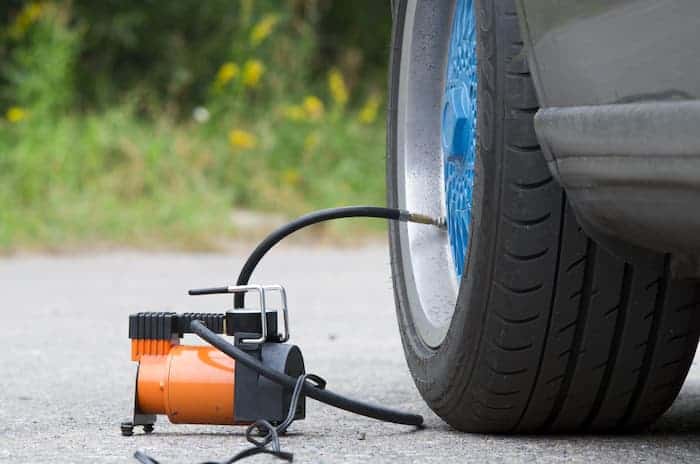Embarking on the DIY journey of tinting your car windows not only enhances your vehicle’s aesthetic but also offers a range of practical benefits. Mastering this skill can block up to 99% of harmful UV rays, ensuring cooler interiors, reduced glare, and enhanced privacy. The process begins with meticulous preparation, emphasizing the importance of thoroughly cleaning your windows, ideally without commercial glass cleaners or ammonia-based solutions to avoid tint discoloration. With careful application techniques, like using the outside of the window as a template for the film and applying the tint with precision, you can achieve professional-grade results. This guide aims to equip auto enthusiasts with the knowledge and confidence to successfully tint their car windows, saving money while also protecting and maintaining the interior of their vehicles. Plus, understanding how to remove car window tint is equally important, as it allows for corrections or updates to your tinting work, ensuring your car always looks its best.
Table of Contents
ToggleStep-by-Step Guide to Tinting Your Car Windows

Tinting your car windows is not just about style; it’s about comfort and protection. This guide will show you how to tint your car windows, ensuring a professional look.
Total Time: 2 hours and 30 minutes
Prepare Your Windows

Remove Debris: Start by removing any stickers, adhesives, or decals from the windows. Use a razor blade if necessary, but be gentle to avoid scratching the glass.
Thorough Washing: Wash the windows using soapy water. It’s best to use a mild, non-abrasive soap to avoid damaging the window.
Focus on Corners: Pay special attention to the corners and edges of the windows, as these areas often accumulate the most dirt and grime.
Use a Squeegee: After washing, use a squeegee to remove the soapy water. This helps in avoiding streaks and ensures a clean surface.
Drying the Windows
Lint-Free Cloth: Dry the windows with a lint-free cloth. This type of cloth won’t leave any residue that could get trapped under the tint film.
Check for Moisture: Ensure that all moisture is removed, especially around the edges. Any remaining moisture can interfere with the adhesive on the tint film.
Measure and Cut the Tint Film

Use a Tape Measure: Measure the dimensions of each window carefully. It’s important to measure from edge to edge, including the curves and corners.
Record Measurements: Write down the measurements for each window. Double-check to avoid any errors.
Cutting the Film
Lay Out the Film: Unroll the tint film on a clean, flat surface larger than the window. Ensure the environment is dust-free to avoid contamination.
Mark the Film: Place the film against the outside of the window and cut a rough outline, leaving about one inch extra around all edges. This extra margin allows for precise adjustments during application.
Use a Sharp Blade: Use a sharp utility knife or razor blade for cutting. Dull blades can tear the film or create jagged edges.
Cut on a Safe Surface: Make sure you’re cutting on a surface that won’t be damaged by the blade, like a glass table or a specific cutting mat.
Refining the Cut
Trim for Precision: Once the rough cut is done, place the film on the inside of the window. Trim the edges for a perfect fit, ensuring the film covers the entire window without overlapping the window frame.
Consider Curves and Corners: Pay special attention to the shape of the window. Some windows have unique curves or angles that require careful trimming to match.
Preparing for Application
Wet the Window: Before applying the film, spray the inside of the window generously with soapy water. The water makes it easier to adjust the film once it’s on the window.
Peel the Film: Carefully peel the backing off the tint film to expose the adhesive side. It’s advisable to do this in a dust-free environment to prevent debris from sticking to the film.
Applying the Film
Position the Film: Starting from the bottom, gently place the adhesive side of the film against the window. The extra soapy water will allow you to slide and adjust the film into the perfect position.
Smooth Out the Film: Once the film is in place, use a squeegee to smooth it out. Start from the center and work your way outwards to push out any air bubbles and excess water. This step is crucial for a bubble-free finish.
Adjusting the Film
Trim Excess Film: If there’s any excess film overlapping the window frame, trim it carefully with a razor knife. It’s important to do this while the film is still wet and pliable.
Check for Bubbles: After trimming, go over the film with the squeegee again, checking for any air pockets or creases. If you find any, gently work them out to the edges.
Trim and Heat the Tint Film

Use a Sharp Blade: A sharp utility knife or razor blade is essential for precise cutting. Dull blades can tear the film or leave jagged edges.
Trimming Technique: Gently pull the film away from the window frame and trim the excess. Keep the blade at a slight angle to ensure a clean cut that is flush with the window frame.
Be Patient: Take your time with this step. Rushed or uneven cuts can ruin the appearance of your tint.
Heating the Film
Use a Heat Gun or Hair Dryer: A heat gun is ideal, but a hair dryer can also work. The heat helps the film adhere smoothly to the window and removes any remaining water or air bubbles.
Apply Heat Evenly: Move the heat source over the surface of the film in a constant, sweeping motion. Avoid overheating any area, as this can cause the film to warp or bubble.
Work Out Bubbles: As you apply heat, use the squeegee to gently work out any air bubbles or minor creases. Start from the center and move towards the edges.
Finalizing the Application
Inspect Your Work: After heating, inspect the window for any imperfections. If you find small bubbles or creases, you can usually smooth them out with a bit more heat and the squeegee.
Allow to Cool: Let the film cool and set for a few minutes. This process helps the adhesive bond fully with the glass.
Inspecting the Tint

Check for Imperfections: Once the film has cooled down, inspect each window carefully. Look for any small bubbles, creases, or areas where the film isn’t adhering properly.
Address Issues Immediately: If you find any imperfections, it’s easier to fix them now rather than later. Use a heat gun and squeegee to gently correct any issues.
Cleaning the Tinted Windows
Wait Before Cleaning: It’s important to wait a bit before cleaning the newly tinted windows. The adhesive needs time to dry, and cleaning too soon can cause the tint to shift or bubble.
Use Mild Cleaners: When it’s time to clean, use a soft cloth and a mild cleaning solution. Avoid ammonia-based cleaners as they can damage the tint.
Allowing the Tint to Cure
Curing Time: The curing process is when the adhesive fully sets and the film completely adheres to the window. This can take 1-4 days, depending on the climate and weather conditions.
Avoid Rolling Down Windows: During the curing period, avoid rolling down the windows. This can cause the tint to peel or get scratched.
Estimated Cost: 30 USD
Tools:
- Razor knife
- Squeegee
- Heat gun or hair dryer
- Lint-free cloth
Materials: Tinting film Soapy water in a spray bottle
Final Tips for Successful Car Window Tinting
Tinting your car windows can be a rewarding DIY project if done correctly. Here are some final tips to ensure success across all six steps of the window tinting process:
1. Gather Your Tools and Materials
- Quality Matters: Invest in high-quality tint film and tools. Better materials lead to better results and longer-lasting tints.
- Stay Organized: Keep your tools and materials organized for easy access during the process.
2. Prepare Your Windows
- Clean Thoroughly: Ensure windows are impeccably clean. Any dirt or residue can cause imperfections in the tint.
- Check Weather Conditions: Avoid tinting in extremely hot or cold temperatures, as this can affect how the tint adheres to the glass.
3. Measure and Cut the Tint Film
- Measure Twice, Cut Once: Accuracy in measuring and cutting the film is key. Take your time to ensure the best fit.
- Use a Guide: Consider using a pre-cut template or a straight edge for more precise cuts.
4. Apply the Film
- Avoid Touching the Adhesive: Minimize contact with the adhesive side of the film to prevent contamination.
- Squeegee Technique: Use firm, smooth strokes with the squeegee to remove air and water, starting from the center and moving outward.
5. Trim and Heat the Tint Film
- Be Gentle: When trimming the excess film, use a gentle touch to avoid cutting the rubber seals or damaging the window.
- Even Heating: Distribute heat evenly when fixing the film in place to avoid bubbles and wrinkles.
6. Final Touches and Curing the Tint
- Patience is Crucial: Allow ample time for the tint to cure. Rushing this process can lead to peeling and air bubbles.
- Post-Installation Care: After the tint has cured, treat it gently. Avoid harsh cleaners and abrasive tools.
General Tips
- Practice First: If you’re new to window tinting, consider practicing on a smaller window or a piece of glass to get the hang of the process.
- Stay Informed: Be aware of your local laws regarding window tinting to ensure compliance.
- Seek Help if Needed: Don’t hesitate to consult a professional or watch instructional videos for additional guidance.
By following these tips, you can achieve a professional-looking tint job that not only enhances the appearance of your car but also offers functional benefits like UV protection and privacy.
Maintenance and Care
- Gentle Cleaning: Use mild soap for cleaning.
- Curing Time: Wait before rolling down windows.
- Regular Inspections: Check for damage periodically.
Legal Considerations
Check local laws for tint specifications to avoid penalties.
Additional Resources
- Wondering about the cost? Find out how much to tint car windows.
- Need to remove the old tint? Here’s how to remove car window tint.
Conclusion
Tinting your car windows is more than just an aesthetic upgrade; it’s a practical enhancement that offers privacy, UV protection, and a cooler interior. While the process might seem challenging at first, with the right tools, patience, and attention to detail, you can achieve a professional-looking result that rivals a shop installation.
Remember, the key to successful window tinting lies in thorough preparation, precise measurement and cutting, careful application, and allowing adequate time for the tint to cure. Each step is crucial in ensuring a smooth, bubble-free finish that not only looks great but also stands the test of time.
As you embark on this DIY project, keep in mind local tinting laws to ensure compliance and avoid potential fines. With these guidelines and tips, you’re well on your way to enhancing your vehicle’s appearance and functionality.
Whether you’re a seasoned DIY enthusiast or a first-timer, window tinting is a rewarding project that can significantly improve your driving experience. So, gather your materials, take your time, and enjoy the process of transforming your vehicle!




